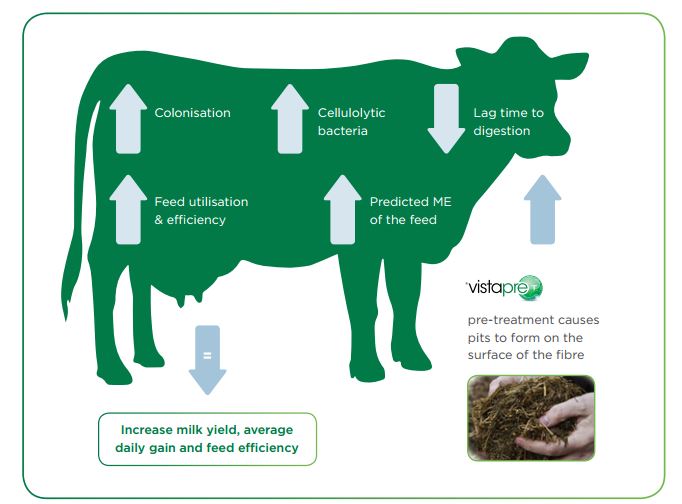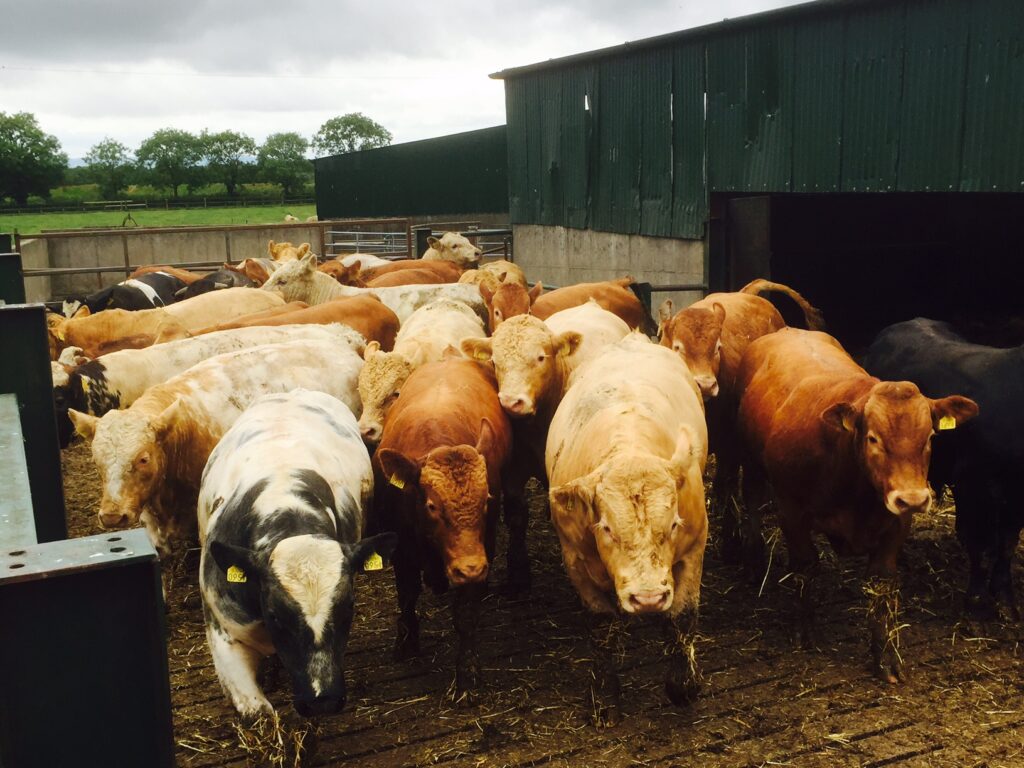Fibre is a key component in the diet of a ruminant and it is vitally important when it comes to maintaining good rumen function.
Energy derived from the fermentation of fibre in the rumen also forms a significant proportion of the total energy available to the animal and can have a notable impact on overall performance.
Although ruminants have evolved to effectively break down fibre to release energy, typically only 65% of plant cell wall is digested in the rumen, meaning valuable energy is unavailable under normal conditions, even when rumen function is optimised.
As grain intake increases to provide the necessary energy for production, the risk of Sub-Acute Ruminal Acidosis (SARA) also increases.
This can negatively impact on health and performance in both dairy and beef.
Getting more value from fibre
According to Martin McConnell, AB Vista Technical Sales Manager one product that has made a huge difference in getting more value from fibre on Irish farms is the feed pre-treatment VistaPre-T.
“It creates a window of opportunity to unlock the energy potential in fibre, creating new value from home grown forage and other fibrous feed.
“Once added into the TMR, VistaPre-T works rapidly to cause pitting and roughening of the fibre surface,” he said.
VistaPre-T extracts more value from fibre meaning farmers can maintain production in circumstances where financial resources are limited, it also allows farmers to make more of their home-grown forage.
McConnell said the product enables an increase in performance and efficiency without compromising on the quality of the finished product.
“Pre-treating feed with the product has been shown to increase feed efficiency in both dairy and beef animals,” he said.
In dairy cows, the benefits have also included improved milk yield and milk quality, with milk production increasing by 4%.
A recent commercial dairy trial run for 80 days with 105 Holstein cows fed a maize silage-based TMR, produced an increase in 4% fat corrected milk yield of 1.24L per day when the ration was treated with VistaPre-T.
This was accompanied by higher percentages and yields of milk fat and protein.
There are also benefits in beef animals with improvements seen in feed efficiency and in average daily gain, while maintaining or reducing dry matter intake.
Heavier animals with VistaPre-T
A recent trial was carried out over 98 days with 24 Holstein bulls, individually penned and fed a mixed ration of concentrates and straw.
12 animals were fed a control diet and 12 other animals were fed the VistaPre-T treated diet.
Animals fed the VistaPre-T treated diet showed an improvement in live weight when compared with the control diet (481.6 vs 474.1 kg) at the end of the trial and the treated group also showed an improvement in ADG in the last month of the trail.
Using the product also allows farmers to increase nutrient digestibility without negatively impacting on rumen fermentation.
VistaPre-T can help extract more energy from the ration and also potentially help to reduce ration costs by replacing a proportion of cereals in the diet with lower quality materials such as wheat dried distillers grain.
VistaPre-T can be applied via a number of commercially available application systems, directly into the TMR.
Inclusion rate is 750ml per tonne of Dry Matter. AB Vista technical services have a wide range of application solutions available depending on individual farms requirements
If you would like to help your customers make the most of their home-grown forage, contact AB Vista’s Technical Manager, Martin McConnell on 086 8109398.
What are the benefits?
Boost milk yield and quality
Boost live weight gain and feed efficiency on beef farms
How to use VistaPre-T on your farm






